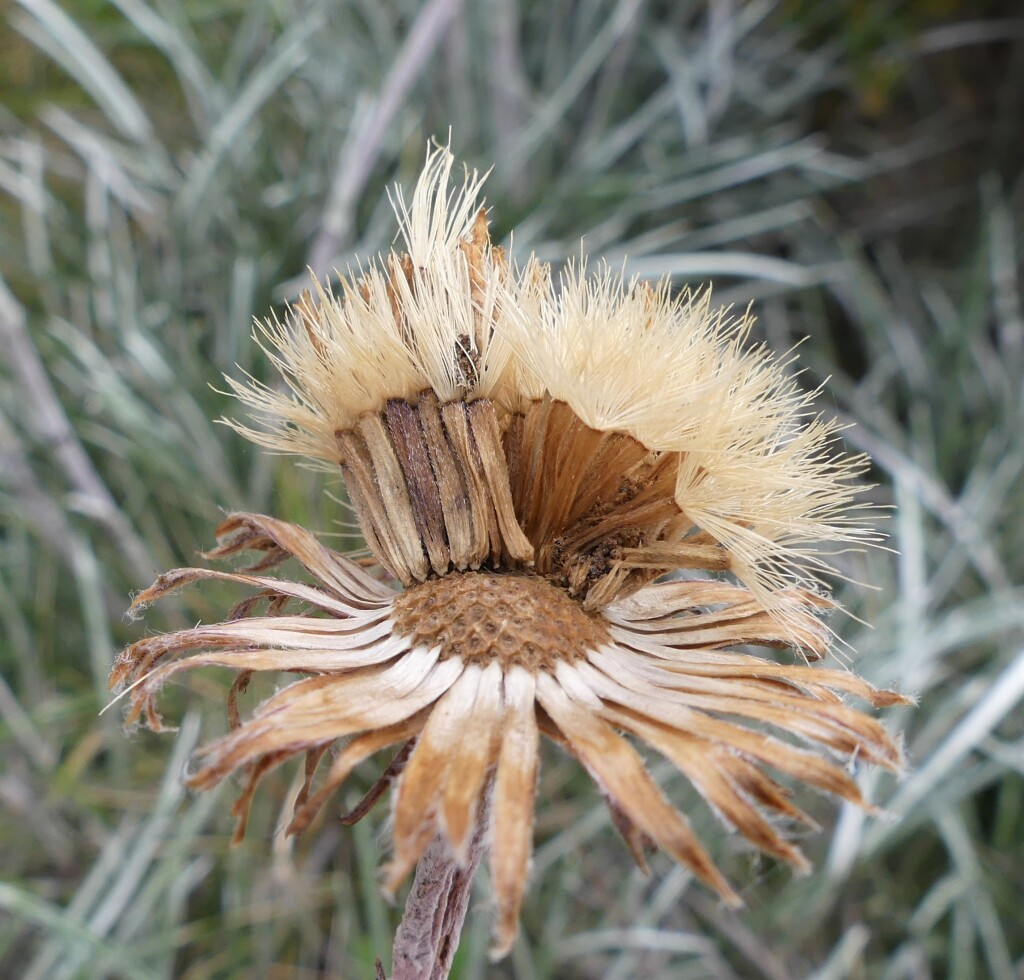Celmisia pugioniformis
M.Gray & GivenRootstock woody, erect or ascending in sheltered sites, branched creeping and rooting in open sites; fibrous leaf remnants persistent. Leaves subulate to linear-subulate, sometimes expanded to narrowly oblanceolate, c. (3–)10–20(–25) cm long, (0.5–)2–6(–8) mm wide, olive-green to grey-green (drying lead-grey) above, pellicle thick, lustrous, usually tardily rupturing beneath to reveal long, white, woolly tomentum, hairs flattened (under high magnification), filling the concavity, usually obscuring the midrib, margins recurved to revolute. Scape woolly-tomentose, to 40 cm high; capitulum c. 3–6 cm diam; intermediate involucral bracts narrowly triangular to narrowly triangular-subulate, c. 9–15 mm long, 1.3–2.8 mm wide, more or less tomentose but usually glabrescent at least in the lower third, reddish-purple distally, margins more or less fimbriate; ligules c. 12–20 mm long, white, often mauve-tipped beneath, or wholly mauve. Cypselas c. (4–)7–9 mm long, with short antrorsely appressed hairs or subglabrous; pappus c. 6–9 mm long Flowers Dec.–Feb.
GGr, EGU, HSF, HNF, MonT, VAlp. Also NSW. The most widespread Celmisia in Victoria, occurring in subalpine and alpine herbfields, heaths and Sphagnum bogs, and subalpine woodlands almost throughout the Snowfields, with a remarkably disjunct occurrence near Mt William in the Grampians.
This species is distinguished by the long narrow leaves with very thick, white tomentum on the underside. Depauperate specimens of this species and C. costiniana (with which it may sometimes form extensive patches) may be difficult to separate, but the flattened tomentum hairs (distinguishable only under high magnification) are diagnostic. At any one site plants of this species can be highly variable in overall dimensions.
Gray, M.; Given, D. (1999). Celmisia. In: Walsh, N.G.; Entwisle, T.J., Flora of Victoria Vol. 4, Cornaceae to Asteraceae, pp. 912–916. Inkata Press, Melbourne.
 Spinning
Spinning
